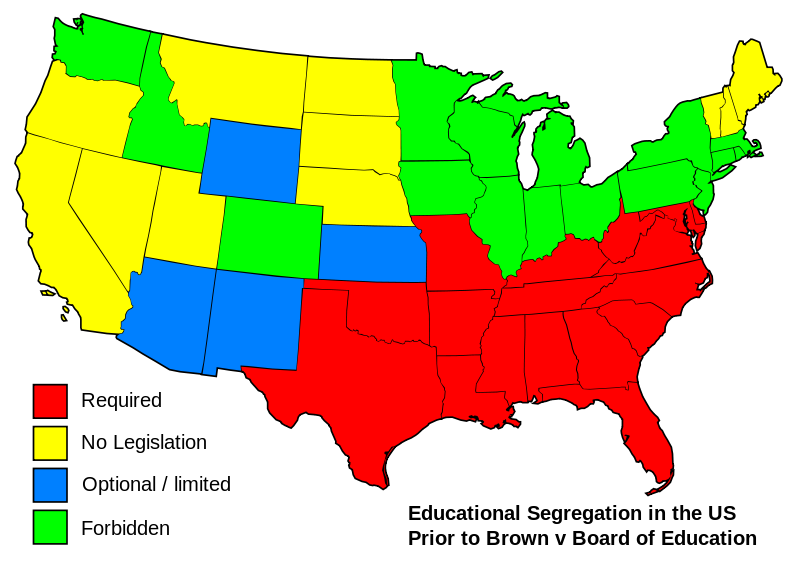The Civil Rights Movement
Brown vs. Board of Education and Little Rock Nine
In 1954 another Supreme Court case was tried.
Oliver Brown who lived in Topeka, Kansas tried to enroll his 7 year old daughter Linda in a new school that was close to their home. The school rejected her application.
The NAACP thought this to be the ideal case to take to court. The case was filed in 1951, and eventually reached the Supreme Court in what was a combination of five similar cases. Thurgood Marshall argued the case before the court. His main argument was that separate school systems were unequal and violated the "equal protection clause" of the Fourteenth Amendment to the U.S. Constitution.
After three years, on May 17, 1954, the Court ruled there was no such thing as separate but equal. Some schools obeyed the ruling immediately, but others found ways to avoid integration. President Eisenhower did not push the schools to obey immediately.

|
In 1957 when the courts ordered integration in the schools in Little Rock, Arkansas, Governor Faubus refused to obey. When nine young African Americans came to enroll at Little Rock Central High School, mobs of people threw rocks and yelled at the students. This caused President Eisenhower to act on the law. He sent soldiers to Little Rock to make sure the students were enrolled. It was many months before these students were treated fairly by their classmates. |

The 101st Airborne Division escorted nine students into the all-white Central High School in Little Rock, Arkansas. |
Online Quiz
|